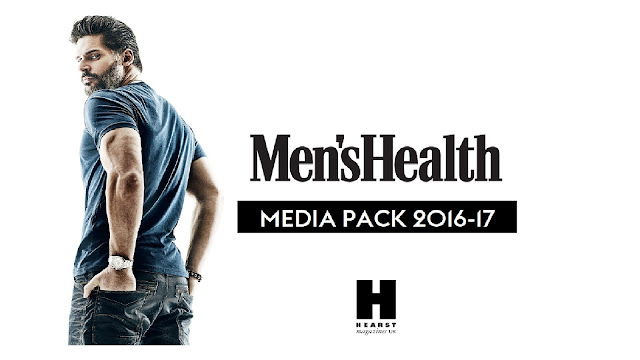MIGRAIN: Semiotics - Icon, Index, Symbol
1) Find three examples for each: icon, index and symbol.
Icon:
Index:
Symbol:
2) Why are icons and indexes so important in media texts?
Ions and indexes are so important in media texts as they allow producers to communicate with their audience. An example of an icon in the media could be the Snapchat app logo. This is a well known icon established with the app and it allows a connection to be made between the consumer and the producer. An example of an index in the media could be dark clouds in the sky in the movie. This allows the producer to communicate to the audience that it is about to rain without even having to show actual rain.
3) Why might global brands try and avoid symbols in their
advertising and marketing?
Global brands might try to avoid using symbols in their advertising and marketing as this would limit the number of people that would understand their message. This is because the connection between the signifier and signified in symbols is completely arbitrary and must be culturally learned. Therefore, if global brands were to add symbols in their advertising, new consumers wouldn't understand the message they are trying to convey and, consequently, they would be deterred from purchasing the intended marketed product.
4) Find an example of a media text (e.g. advert) where the producer has accidentally communicated the wrong meaning using icons, indexes or symbols. Why did the media product fail?
The most recent example of an advert that failed due to the producer accidentally communicating the wrong meaning was the Pepsi advert that featured Kendall Jenner. The advert involved a multitude of people of different cultures, faith and sexuality coming together in a protest. There was a row of police men stopping the protest from going any further. However, when Kendall Jenner offered one of the police men a can of Pepsi, he gladly accepted it and the police men let the protesters continue.
Pepsi claimed that their aim of this advert was 'to project a global message of unity, peace and understanding.' This was the hegemonic reading. However, the counter-hegemonic reading thought the exact opposite and the Pepsi advert was widely criticised for appearing to trivialise demonstrations aimed at tackling social justice causes, suggesting that protesters and police would get along better if the former were kinder and being insensitive with regard to the Black Lives Matter movement.

The picture on the left depicts an example of what the public were talking about when they criticised the Pepsi advert. The young black boy tried offering the white policeman a water bottle but nothing changed. This advert therefore failed because of the misunderstanding caused. They were criticised for taking racism too lightly. As a result, both Pepsi and Kendall Jenner were effected negatively by this incident. Pepsi claimed- '"We are pulling the content and halting any further rollout. We also apologise for putting Kendall Jenner in this position."
Source: http://www.independent.co.uk/arts-entertainment/tv/news/pepsi-advert-pulled-kendall-jenner-protest-video-cancelled-removed-a7668986.html
5) Find an example of a media text (e.g. advert) that successfully uses icons or indexes to create a message that can be easily understood across the world.
This advert is from the makeup brand L'Oréal Paris. It was made to market the new L'Oréal True match foundation that features 23 shades, making the foundation truly usable for almost all cultures and individuals of all skin tones. It was a well known fact that many individuals struggled to find a foundation colour that matched their skin tone due to the very limited and generic colours available. The line used in the advert 'because we are all worth it' highlights the positive message and action L'Oréal has made here.
The producers and audience can both agree on a negotiated reading here- L'Oréal aimed to create a product that can be used by anyone and welcome the beauty of diversity in our world.
Icon:
Index:
Symbol:
2) Why are icons and indexes so important in media texts?
Ions and indexes are so important in media texts as they allow producers to communicate with their audience. An example of an icon in the media could be the Snapchat app logo. This is a well known icon established with the app and it allows a connection to be made between the consumer and the producer. An example of an index in the media could be dark clouds in the sky in the movie. This allows the producer to communicate to the audience that it is about to rain without even having to show actual rain.
3) Why might global brands try and avoid symbols in their
advertising and marketing?
Global brands might try to avoid using symbols in their advertising and marketing as this would limit the number of people that would understand their message. This is because the connection between the signifier and signified in symbols is completely arbitrary and must be culturally learned. Therefore, if global brands were to add symbols in their advertising, new consumers wouldn't understand the message they are trying to convey and, consequently, they would be deterred from purchasing the intended marketed product.
4) Find an example of a media text (e.g. advert) where the producer has accidentally communicated the wrong meaning using icons, indexes or symbols. Why did the media product fail?
The most recent example of an advert that failed due to the producer accidentally communicating the wrong meaning was the Pepsi advert that featured Kendall Jenner. The advert involved a multitude of people of different cultures, faith and sexuality coming together in a protest. There was a row of police men stopping the protest from going any further. However, when Kendall Jenner offered one of the police men a can of Pepsi, he gladly accepted it and the police men let the protesters continue.
Pepsi claimed that their aim of this advert was 'to project a global message of unity, peace and understanding.' This was the hegemonic reading. However, the counter-hegemonic reading thought the exact opposite and the Pepsi advert was widely criticised for appearing to trivialise demonstrations aimed at tackling social justice causes, suggesting that protesters and police would get along better if the former were kinder and being insensitive with regard to the Black Lives Matter movement.

The picture on the left depicts an example of what the public were talking about when they criticised the Pepsi advert. The young black boy tried offering the white policeman a water bottle but nothing changed. This advert therefore failed because of the misunderstanding caused. They were criticised for taking racism too lightly. As a result, both Pepsi and Kendall Jenner were effected negatively by this incident. Pepsi claimed- '"We are pulling the content and halting any further rollout. We also apologise for putting Kendall Jenner in this position."
Source: http://www.independent.co.uk/arts-entertainment/tv/news/pepsi-advert-pulled-kendall-jenner-protest-video-cancelled-removed-a7668986.html
5) Find an example of a media text (e.g. advert) that successfully uses icons or indexes to create a message that can be easily understood across the world.
This advert is from the makeup brand L'Oréal Paris. It was made to market the new L'Oréal True match foundation that features 23 shades, making the foundation truly usable for almost all cultures and individuals of all skin tones. It was a well known fact that many individuals struggled to find a foundation colour that matched their skin tone due to the very limited and generic colours available. The line used in the advert 'because we are all worth it' highlights the positive message and action L'Oréal has made here.
The producers and audience can both agree on a negotiated reading here- L'Oréal aimed to create a product that can be used by anyone and welcome the beauty of diversity in our world.









Comments
Post a Comment